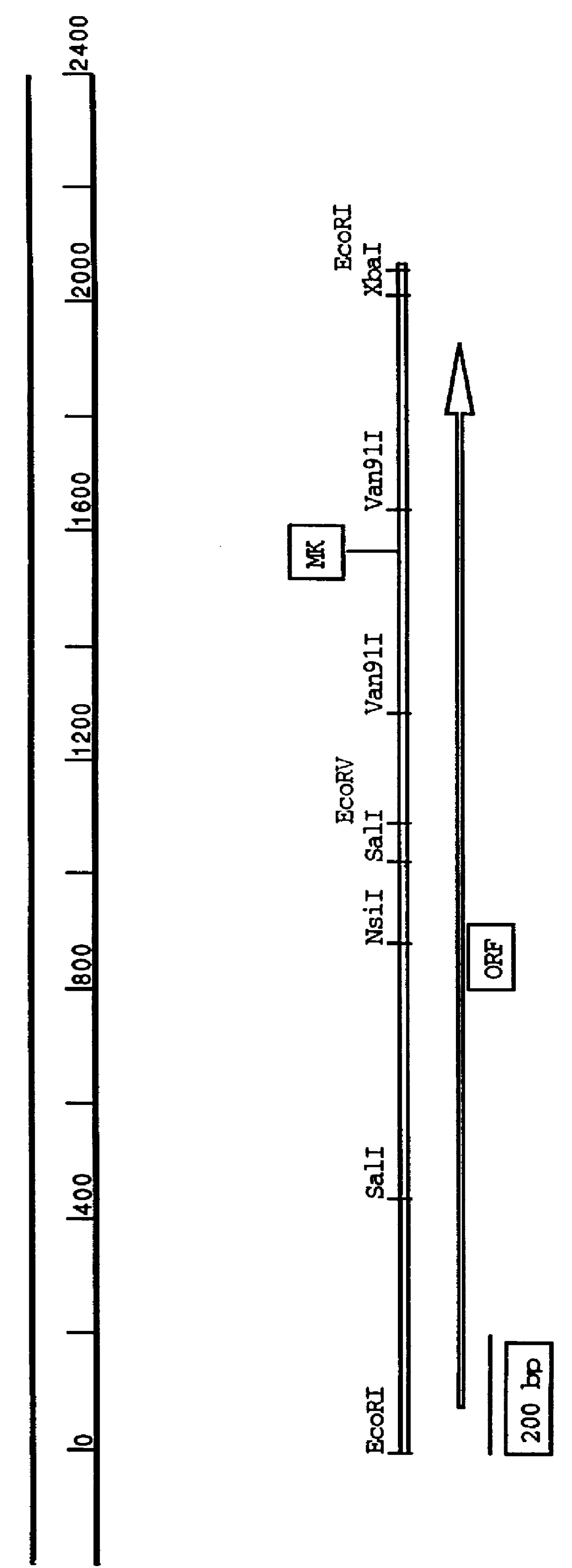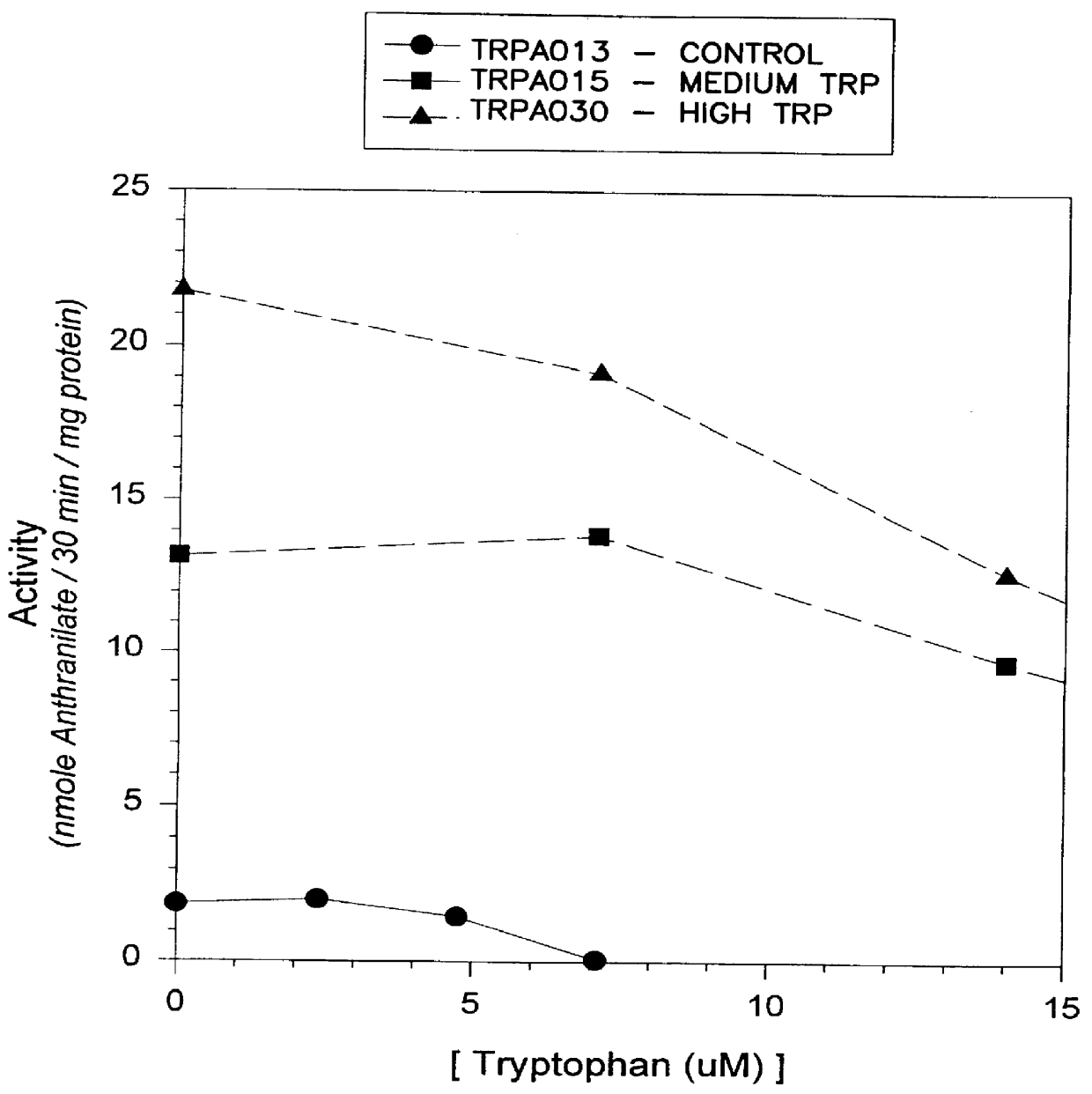Anthranilate synthase gene and method of use thereof for conferring tryptophan overproduction
an anthranilate synthase and tryptophan technology, applied in the field of anthranilate synthase gene and method of use thereof for conferring tryptophan overproduction, can solve the problems of difficult to obtain the 5-mt resistance phenotype in tobacco plants derived from 5-mt, found to be very unstabl
- Summary
- Abstract
- Description
- Claims
- Application Information
AI Technical Summary
Benefits of technology
Problems solved by technology
Method used
Image
Examples
example 1
Identification of Recombinant DNA Clones Corresponding to Genes Encoding Maize Anthranilate Synthase Alpha- and Beta-Subunits
To obtain clones corresponding to maize genes encoding the alpha-subunit of anthranilate synthase, gene-specific oligonucleotide primers corresponding to the Arabidopsis ASA2 gene sequence (GenBank Accession M92354) were designed to allow for PCR amplification of a region from exons 10 through 11 of this gene in Arabidopsis. Exons 10 and 11 of the alpha subunit of the Arabidopsis anthranilate synthase have been defined by Niyogi and Fink (supra). These primers, designated ASA2-C (AAGAAGATCTAATGCTGGAAAAA, SEQ ID NO:5) and ASA2-D (GATATTGTTGATGTGAGGTGTGA, SEQ ID NO:6), were used in a PCR amplification of Arabidopsis DNA under the following conditions: 0.5 .mu.g of DNA was used as template in reactions containing 0.5 .mu.M each of primer ASA2-C and ASA2-D, 200 .mu.M each dATP, dCTP, dGTP, and dTTP, 1 mM MgCl.sub.2, 50 mM KCl, 10 mM Tris-HCl, pH 8.3, and 2.5U Taq ...
example 2
Genetic Mapping of the 5-MT Resistance Trait in Maize and of cDNA Sequences Corresponding to Genes Encoding Anthranilate Synthase Sequences
The 5-MT resistance trait present in the maize line C28 was localized to the short arm of chromosome 1 using waxy reciprocal translocations. C28 plants homozygous for the 5-MT resistance trait were crossed by a series of waxy translocation stocks obtained from the Maize Genetics Stock Center, Urbana, Ill. F1 plants obtained from these crosses were subsequently crossed to a homozygous waxy tester stock, and progeny from this testcross were separated into starchy [Wx / (?)] and waxy [wx / wx] kernels using routine iodine staining procedures. Kernels of each class were subsequently subjected to a root growth bioassay for 5-methyltryptophan resistance as described by Hibberd et al., U.S. Pat. No. 4,581,847. Linkage between the 5-MT resistance trait and Wx was observed in progeny obtained from initial crosses involving wx stock TI-9c: of 91 Wx kernels ana...
example 3
Characterization of DNA Sequences Corresponding, to Maize Genes Encoding Anthranilate Synthase Alpha Subunits
Of the four clones (pcASA2 1-1, 2-1, 4-1, 5-3) which exhibited sequence identity for the regions initially analyzed, pcASA2 2-1 was determined to be the longest clone by restriction enzyme mapping analysis of the clones. Thus, pcASA2 2-1 was selected for further analysis. The entire nucleotide sequence of the maize cDNA contained in the clone pcASA2 2-1, designated below as pDPG600 was determined using standard procedures employing the Sequenase system (USB, Cleveland, Ohio). Sequence analysis was performed using oligonucleotide primers specific for the cloning vector, pBSK, to obtain sequence information from the ends of the cDNA fragment, and oligonucleotide primers specific for internal sequences based on internal sequence information from subclones generated from pcASA2 2-1 which were cloned in pBSK with endpoints at the EcoRV site shown in FIG. 1. The sequence informatio...
PUM
| Property | Measurement | Unit |
|---|---|---|
| temperatures | aaaaa | aaaaa |
| pH | aaaaa | aaaaa |
| pH | aaaaa | aaaaa |
Abstract
Description
Claims
Application Information
 Login to View More
Login to View More - R&D
- Intellectual Property
- Life Sciences
- Materials
- Tech Scout
- Unparalleled Data Quality
- Higher Quality Content
- 60% Fewer Hallucinations
Browse by: Latest US Patents, China's latest patents, Technical Efficacy Thesaurus, Application Domain, Technology Topic, Popular Technical Reports.
© 2025 PatSnap. All rights reserved.Legal|Privacy policy|Modern Slavery Act Transparency Statement|Sitemap|About US| Contact US: help@patsnap.com


